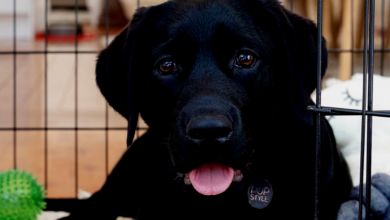
Designer Dog Breeds: Are They Really Worth the Hype?
Are designer dog breeds worth the hype? Explore ethical concerns, health risks, and better alternatives before buying. Adopt, don’t shop.
Designer dog breeds have surged in popularity over the past few decades, marketed as the perfect combination of intelligence, charm, and hypoallergenic qualities. From the ever-popular Labradoodle to the adorable Pomsky, these crossbreeds are often touted as superior to purebred dogs, promising the best traits of both parent breeds. But behind the glossy advertisements and celebrity endorsements, many wonder are these dogs truly worth their hefty price tags, or is their appeal just a result of clever branding? This article explores the reality behind the trend, examining the benefits, risks, and ethical concerns surrounding designer dogs.
The rise of designer dog breeds reflects a growing demand for pets that fit specific lifestyles, whether it’s a low-shedding companion for allergy sufferers or a highly trainable family dog. However, the lack of regulation in breeding practices and the unpredictability of mixed traits raise important questions. Are these dogs really healthier and better-tempered than their purebred counterparts, or does their popularity stem more from fashion than function? By delving into the origins, pros, and cons of designer breeds, we aim to help potential pet owners make an informed decision one that prioritizes the well-being of the animal over fleeting trends.
Designer Dog Breeds
Designer dog breeds, such as Labradoodles, Cockapoos, and Pomskies, have surged in popularity due to their unique appearances and marketed traits like hypoallergenic coats or friendly temperaments. However, these crossbreeds often come with hefty price tags and ethical concerns, as many are bred for profit rather than health or welfare. Unlike responsibly bred purebred dogs with predictable traits, designer mixes can inherit genetic health issues from both parent breeds.
The Rise of Designer Dog Breeds
The phenomenon of designer dog breeds emerged from a deliberate effort to combine the most desirable traits of two purebred dogs into one ideal companion. While mixed-breed dogs have existed for centuries, the intentional creation of these hybrids as a distinct category gained momentum in the late 20th century. The Labradoodle, widely considered the first official designer breed, was developed in 1988 by Australian breeder Wally Conron, who sought to create a hypoallergenic guide dog by crossing a Labrador Retriever with a Standard Poodle. This successful experiment sparked a wave of similar crossbreeding efforts, giving rise to countless hybrids like the Goldendoodle (Golden Retriever + Poodle), Cockapoo (Cocker Spaniel + Poodle), and Puggle (Pug + Beagle). The popularity of designer dog breeds skyrocketed in the early 2000s, fueled by celebrity endorsements and social media trends that portrayed these dogs as fashionable, low-maintenance pets.
The Pros of Designer Dogs
One of the biggest selling points of designer dog breeds is their potential for hybrid vigor the idea that crossbreeding reduces the risk of genetic disorders common in purebred lines. While this can be true in some cases, it’s not a guarantee. Many breeders emphasize desirable traits like low shedding, friendliness, or adaptability, making these dogs appealing to urban pet owners and families with allergies.
Additionally, designer dogs often come with carefully curated reputations. Goldendoodles, for example, are known for their friendly and social nature, while Cavapoos are praised for their affectionate and gentle temperament. For buyers seeking a specific type of companion, this predictability can be a major advantage over adopting a random mixed-breed dog from a shelter.
The Cons and Controversies
While designer dog breeds are often marketed as the perfect pets, their growing popularity has sparked significant debate among veterinarians, animal welfare advocates, and responsible breeders. One of the most pressing concerns is the lack of genetic predictability. Unlike purebred dogs, which adhere to established breed standards, designer hybrids can inherit any combination of traits from their parent breeds meaning a single litter may produce puppies with wildly different sizes, temperaments, and health predispositions.
For example, a Goldendoodle might inherit the Poodle’s hypoallergenic coat or the Golden Retriever’s heavy shedding, leaving buyers with unexpected grooming challenges. This unpredictability extends to temperament, where promised traits like “family-friendly” or “low-energy” are never guaranteed, potentially leading to mismatched pets and owner dissatisfaction. Another major issue is the proliferation of unethical breeding practices fueled by the high demand for these dogs. Puppy mills .
Ethical Alternatives
Designer dog breeds, such as Labradoodles and Goldendoodles, have gained immense popularity for their unique looks and promised hypoallergenic traits. However, the hype often overshadows ethical concerns, including irresponsible breeding practices, health issues from overbreeding, and inflated prices. Many designer dogs are bred for profit rather than well-being, leading to genetic disorders and overcrowded shelters when trends fade.
Instead of supporting this industry, ethical alternatives like adopting from shelters or rescuing mixed-breed dogs offer a compassionate choice. Reputable breeders who prioritize health and temperament over trends are another responsible option. Ultimately, the true worth of a dog lies in its companionship, not its pedigree choosing ethically ensures a happier, healthier life for pets and reduces harm in the canine community.
The ethics of breeding designer dog breeds are hotly debated. While some breeders operate responsibly, others contribute to overpopulation and poor living conditions for parent dogs. Animal welfare advocates argue that adopting from shelters or rescues is a more ethical choice, as millions of dogs including many purebreds are euthanized each year due to overcrowding.
For those set on a specific hybrid, researching ethical breeders is crucial. Look for those who conduct health screenings, provide transparency about lineage, and prioritize the well-being of their dogs over profits. Alternatively, consider fostering or adopting a mixed-breed dog—many possess the same desirable traits without the high cost or ethical concerns.
Read More: How Telehealth is Changing Pet Healthcare in 2025
Conclusion
Designer dog breeds may offer appealing combinations of traits, but they come with significant considerations that potential owners should carefully weigh. While some hybrids do deliver on their promises of hypoallergenic coats, friendly temperaments, or unique appearances, others may inherit health issues or unpredictable behaviors due to irresponsible breeding practices. The high price tags attached to these dogs often reflect market demand rather than guaranteed quality, making thorough research and ethical sourcing essential for anyone considering bringing one home.
Ultimately, the decision to choose a designer dog breed should go beyond trends and focus on responsible pet ownership. Whether you opt for a hybrid, a purebred, or a rescue dog, prioritizing health, temperament, and ethical breeding practices is far more important than following the latest craze. After all, the true worth of a dog lies not in its pedigree or popularity, but in the love, care, and commitment shared between pet and owner. By making informed choices, we can ensure that our furry companions lead happy, healthy lives—regardless of their breed label.
FAQs
What is a designer dog breed?
A designer dog breed is a cross between two purebred dogs, intentionally bred to combine specific traits, such as a Labradoodle (Labrador + Poodle).
Are designer dogs healthier than purebreds?
While hybrid vigor can reduce some genetic risks, irresponsible breeding can still lead to health issues—researching breeders is key.
Why are designer dogs so expensive?
High demand, breeding costs, and marketing contribute to their premium prices, often ranging from 1,000to3,000 or more.
Do designer dogs have predictable temperaments?
Not always since they are not standardized, traits can vary widely even within the same breed mix.
Should I adopt instead of buying a designer dog?
Many advocates recommend adoption, as shelters have countless dogs in need of homes, including breeds similar to designer hybrids.







